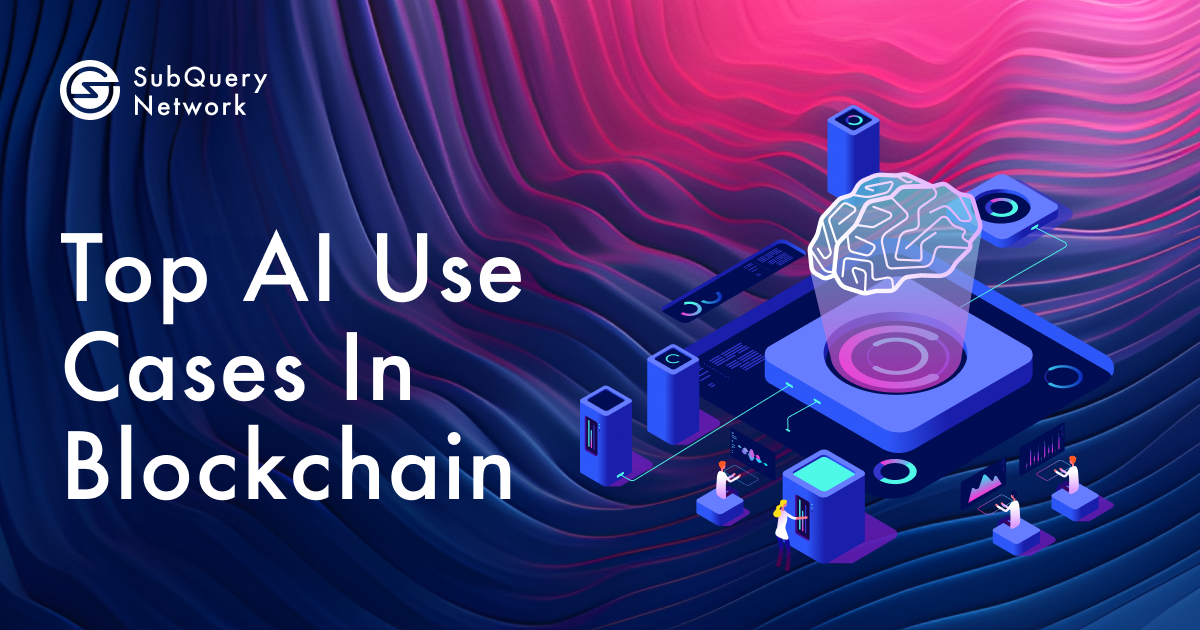AI and Blockchain are two groundbreaking technologies that, when combined, can unlock unprecedented potential. Here are five powerful use cases where AI merges with blockchain, driving the next wave of innovation:
AI Agents (Dynamic Digital Agents or DDAs)
AI Agents (DDAs) are sophisticated AI programs that offer a new level of efficiency and accuracy for traders.
They work by analysing past data to make informed trading decisions. Unlike traditional trading where human emotions and biases can lead to poor decisions, DAAs rely solely on data, creating a level of precision that is hard to achieve manually.
These agents can process vast amounts of data and recognize patterns that would generally be invisible to human traders, allowing them to detect subtle market changes and potential risks, enabling more secure and informed trading decisions.
The 2024 Crypto Trend Report by Gemini anticipates an evolution in payment methods, with AI agents poised to transform how transactions are conducted on the blockchain.
Market Predictions and Analysis
AI is great at processing and analysing large volumes of data. By utilising advanced algorithms, AI can sift through vast amounts of market data, including trading volumes, price patterns, and even social media sentiment, to provide comprehensive market analysis.
One of the key elements in AI-powered market predictions is sentiment analysis. AI algorithms can scour through social media posts, news stories, and financial reports, discovering insights about public sentiment towards various cryptocurrencies.
This provides deeper insights for investors and traders, enabling them to understand market dynamics better and anticipate future movements. And even better, this eliminates the need to do manual research to make investment decisions which are much prone to human error.
Identity Verification
Traditional identity verification methods often rely on cumbersome processes, from presenting physical IDs to answering personal questions. However, with the advent of Blockchain technology and the introduction of AI, this paradigm is shifting dramatically.
Blockchain, known for its immutability and security, provides an ideal platform for storing and managing identity data. AI algorithms, on the other hand, add an extra layer of sophistication to this process. Here’s how it works:
- Biometric Authentication: AI can analyse biometric data, such as facial recognition, fingerprints, and voice patterns, with unparalleled accuracy. When linked to a Blockchain-based identity, it creates an almost foolproof authentication system.
- Smart Contracts for Verification: Blockchain’s smart contracts can automatically enforce agreements. In identity verification, these contracts only grant access to information after AI-based checks confirm the identity, ensuring privacy and control.
- Decentralised Identity: Instead of relying on a centralised authority, AI-powered Blockchain identity verification decentralizes the process. Individuals retain control over their data and can selectively share it, reducing the risk of identity theft.
AI’s Role in Governing DAOs
DAOs are essentially self-operating entities that rely on smart contracts and Blockchain technology to make decisions without centralised control. However, to ensure efficient and effective decision-making, AI plays a pivotal role. Here’s how:
- Smart Contract Optimisation: AI algorithms can analyse smart contracts within DAOs, identifying potential vulnerabilities or inefficiencies. This helps in enhancing the security and reliability of these self-operating organizations.
- Efficiency: AI algorithms can process vast amounts of data rapidly. This efficiency ensures that decisions are made promptly, reducing bottlenecks in the decision-making pipeline.
- Transparency: Blockchain’s inherent transparency, coupled with AI-powered auditing tools, ensures that every decision made within a DAO is traceable and verifiable. This transparency enhances trust among members.
- Security: AI-powered security measures can detect and prevent fraudulent activities or attacks on the DAO. This safeguards the organization’s assets and reputation.
AI DAOs are more adaptable than traditional organisations because their rules are embedded in smart contracts, allowing for easy modifications. Here’s how they differ:
Fraud Detection and Security
One of the most significant advantages of incorporating AI into Blockchain is the enhancement of security protocols. Traditional Blockchain networks rely on cryptographic techniques to secure data, making it incredibly difficult for unauthorised access. However, AI adds an extra layer of intelligence to this security framework.
AI algorithms actively monitor blockchain transactions and network activities in real time. By spotting anomalies or suspicious behaviors, they help identify potential security threats. These smart systems can catch even the slightest deviations, significantly reducing the risk of data breaches.
Conclusion
As we wrap up, it's clear that the combination of AI's smarts and Blockchain's security is a game-changer. Whether you're new or experienced, the examples we’ve showed previously demonstrated the future of innovation.
Embracing these tech advancements is essential. The partnership between AI and Blockchain is setting new standards for efficiency, security, and transparency.
About SubQuery
SubQuery Network is innovating web3 infrastructure with tools that empower builders to decentralise the future. Our fast, flexible, and open data indexer supercharges dApps on over 200 networks, enabling a user-focused web3 world. Soon, our Data Node will provide breakthroughs in the RPC industry, and deliver decentralisation without compromise. We pioneer the web3 revolution for visionaries and forward-thinkers. We’re not just a company — we’re a movement driving an inclusive and decentralised web3 era. Let’s shape the future of web3, together.
Linktree | Website | Discord | Telegram | Twitter | Blog | Medium | LinkedIn | YouTube

